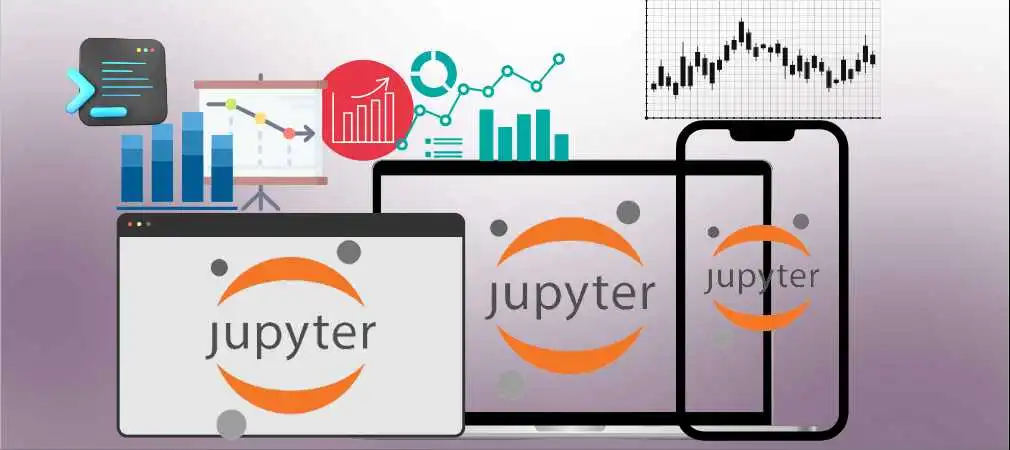Blogs
Exploring Customer Churn Analysis Using Jupyter Notebook
Introduction

In the fiercely competitive landscape of business, understanding customer behaviour is paramount. One crucial aspect is customer churn - the phenomenon where customers cease doing business with a company. In this blog post, we will delve into how Jupyter Notebook, a powerful tool for data analysis and machine learning, can be utilised to analyse and predict customer churn.
Exploratory Data Analysis (EDA): Uncovering Insights with Python:
Exploratory Data Analysis (EDA) is the process of exploring and understanding data sets before diving into formal statistical modelling. It involves summarising the main characteristics of a dataset, often using statistical graphics and other data visualisation techniques. EDA helps analysts to understand the data, detect anomalies, test hypotheses, and check assumptions.
By using visualisation techniques and tools like Matplotlib and Seaborn, analysts can gain valuable insights into their data, uncover hidden patterns, and make informed decisions.
Mastering Data Cleaning and Preprocessing Techniques in Python
Data cleaning and preprocessing are essential steps in the data analysis pipeline. There are various techniques for handling missing values, outliers, and data normalisation, as well as data transformation methods such as encoding categorical variables and feature scaling.
Missing values are a common occurrence in real-world datasets and can adversely affect the performance of machine learning models if not addressed properly. There are different techniques for handling missing values, including imputation methods such as mean, median, and mode imputation, as well as advanced techniques like K-nearest neighbours (KNN) imputation and interpolation.
Outliers are data points that deviate significantly from the rest of the data and can distort statistical analyses and machine learning models.There are techniques for identifying and dealing with outliers, including visualisation methods like box plots and scatter plots, as well as statistical methods like z-score and IQR (Interquartile Range) methods for outlier detection and removal.
Exploring Machine Learning Algorithms in Python
Machine learning algorithms play a pivotal role in extracting insights and making predictions from data. In this guide, we'll delve into popular machine learning algorithms and their implementations in Python. There are foundational algorithms like linear regression and decision trees, as well as advanced techniques such as support vector machines (SVM), ensemble methods, and neural networks.
Linear regression is a simple yet powerful algorithm for modelling the relationship between a dependent variable and one or more independent variables.
Decision trees are versatile algorithms that can handle both classification and regression tasks. We'll implement decision trees in Python using Scikit-learn and visualise the resulting tree structure.
K-nearest neighbours is a non-parametric algorithm used for classification and regression tasks. It predicts the class or value of a new data point based on the majority vote or average of its k-nearest neighbours
Exploring Natural Language Processing (NLP) in Python
Natural Language Processing (NLP) is a branch of artificial intelligence that focuses on the interaction between computers and human languages. It will introduce you to the fundamentals of NLP and explore text preprocessing techniques.
Text preprocessing is a crucial step in NLP that involves cleaning and transforming raw text data into a format suitable for analysis and modeling.There are various text preprocessing techniques, including:
- Tokenization: Splitting text into individual words or tokens.
- Stopword Removal: Removing common words that carry little or no meaning.
- Stemming and Lemmatization: Reducing words to their base or root forms.
- Normalisation: Converting text to lowercase and handling contractions and abbreviations.
Mastering Time Series Analysis and Forecasting in Python
Time series analysis is a powerful technique for analysing and forecasting sequential data points collected over time. EDA is a crucial step in understanding the underlying patterns and structure of time series data. It will explore techniques for visualising time series data, including line plots, scatter plots, and autocorrelation plots.
Exploring Image Processing and Computer Vision with Python
Image processing and computer vision are exciting fields that enable computers to interpret and analyse visual information. In this Jupyter notebook, we'll delve into the fundamentals of image processing and computer vision using Python and popular libraries like OpenCV.
Object detection is a fundamental task in computer vision that involves identifying and localising objects within an image. Image processing and computer vision are rapidly evolving fields with applications in various domains, including healthcare, autonomous vehicles, and robotics.
Mastering Model Evaluation and Hyperparameter Tuning in Python
Model evaluation and hyperparameter tuning are essential steps in the machine learning pipeline for building accurate and robust models. In this Jupyter notebook, there are various techniques for evaluating machine learning models and optimising their performance through hyperparameter tuning using Python and popular libraries like Scikit-learn. .
Hyperparameters are parameters that control the learning process of machine learning models and cannot be directly estimated from the data. Hyperparameter tuning techniques such as grid search and random search for finding the optimal hyperparameters that maximise the model's performance.
Conclusion
In conclusion, our exploration of customer churn analysis usingJupyter Notebook has provided valuable insights into understanding and predicting customer attrition. Leveraging data an s influencing churn and developed strategies to mitigate it. This analysis equips businesses with actionable insights to enhance customer retention and drive sustainable growth.
© 2025 LEJHRO. All Rights Reserved.
